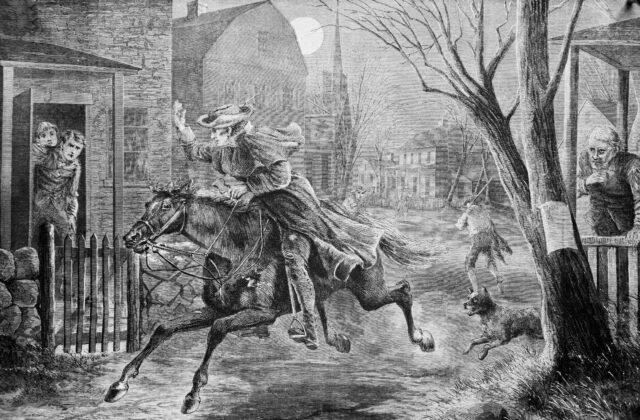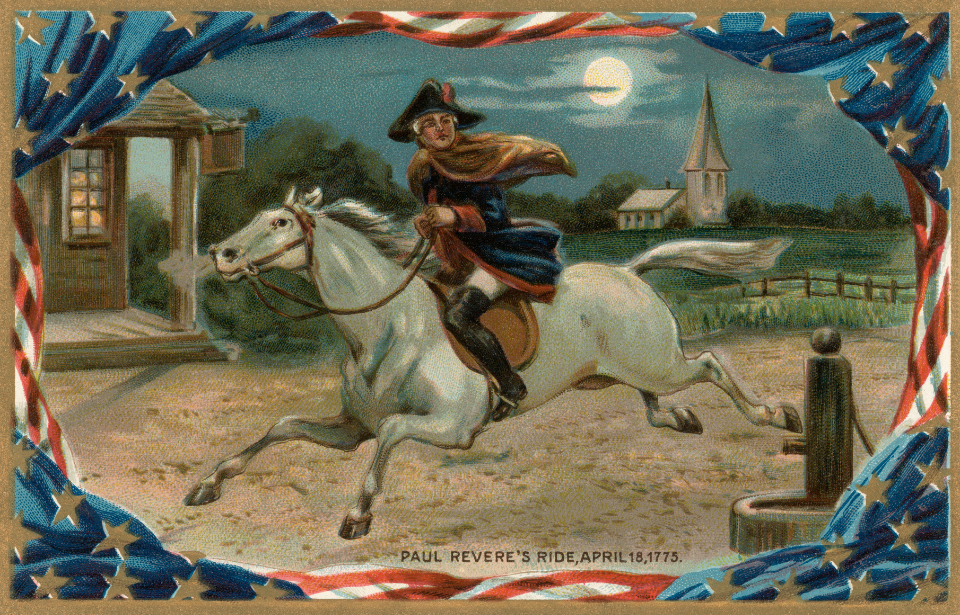Paul Revere Warns of the Arrival of British Troops During the American Revolutionary War
On April 18, 1775, history was set ablaze as Paul Revere embarked on his legendary midnight ride, etching his name into the annals of American history. Mounted on horseback, Revere raced through the streets of Boston, sounding the alarm with his iconic cry, “To arms! To arms! The Regulars are out!” His daring journey was not merely a ride; it was a call to arms, a beacon of resistance against British tyranny during the American Revolutionary War.

As the clock struck midnight, Revere set forth on his mission, riding from Boston to Lexington, Massachusetts, to warn colonial militias of the approaching British forces. Accompanied by William Dawes and Samuel Prescott, Revere strategically arranged for lanterns to be hung in the Old North Church tower—one lantern hung if the British were coming by land and two if by sea. Despite being detained by British soldiers shortly after leaving Lexington, Revere managed to escape custody and continued his ride, spreading the warning throughout the countryside.
More from us: 16 Historical Quotes Most People Get Wrong
Would you like to see more historical content from The Vintage News? What if we sent it directly to your inbox weekly? Sign up here to receive our weekly newsletter.
Paul Revere’s midnight ride has since become a symbol of American patriotism and resilience, immortalized in poetry, art, and folklore. While Henry Wadsworth Longfellow’s poem, “Paul Revere’s Ride,” captures the essence of Revere’s courage, it’s important to remember the factual details of his mission. His brave actions on that fateful night galvanized the spirit of revolution and ignited the flame of liberty that would ultimately lead to the birth of a new nation. As we commemorate April 18, 1775, we honor the indomitable spirit of Paul Revere and the countless patriots who fought for freedom and independence.
